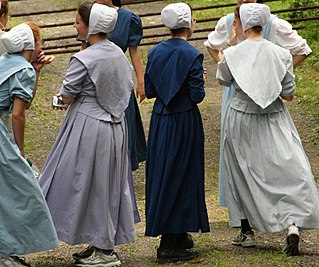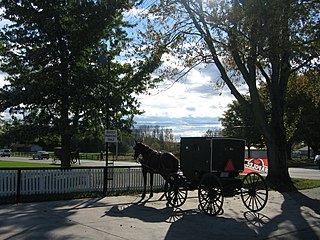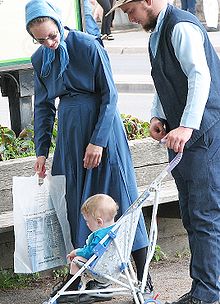
Mennonites are a group of Anabaptist Christian communities tracing their roots to the epoch of the Radical Reformation. The name Mennonites is derived from the cleric Menno Simons (1496–1561) of Friesland, part of the Holy Roman Empire, present day Netherlands. Menno Simons became a prominent leader within the wider Anabaptist movement and was a contemporary of Martin Luther (1483–1546) and Philip Melanchthon (1497–1560). Through his writings about the Reformation Simons articulated and formalized the teachings of earlier Swiss Anabaptist founders as well as early teachings of the Mennonites founded on the belief in both the mission and ministry of Jesus. Formal Mennonite beliefs were codified in the Dordrecht Confession of Faith (1632), which affirmed "the baptism of believers only, the washing of the feet as a symbol of servanthood, church discipline, the shunning of the excommunicated, the non-swearing of oaths, marriage within the same church", nonresistance, and in general, more emphasis on "true Christianity" involving "being Christian and obeying Christ" as they interpret it from the Holy Bible.

The Old Order River Brethren, formerly sometimes known as York Brethren or Yorkers, are a River Brethren denomination of Anabaptist Christianity with roots in the Radical Pietist movement. As their name indicates, they are Old Order Anabaptists.
Peace churches are Christian churches, groups or communities advocating Christian pacifism or Biblical nonresistance. The term historic peace churches refers specifically only to three church groups among pacifist churches:
Old Order Mennonites form a branch of the Mennonite tradition. Old Order are those Mennonite groups of Swiss German and south German heritage who practice a lifestyle without some elements of modern technology, still drive a horse and buggy rather than cars, wear very conservative and modest dress, and have retained the old forms of worship, baptism and communion.
Donald B. Kraybill is an American author, lecturer, and educator on Anabaptist faiths and culture. Kraybill is widely recognized for his studies on Anabaptist groups and in particular the Amish. He has researched and written extensively on Anabaptist culture. He is Distinguished Professor Emeritus at Elizabethtown College and Senior Fellow Emeritus at Elizabethtown's Young Center for Anabaptist and Pietist Studies.
Amish Mennonites came into existence through reform movements among North American Amish mainly between 1862 and 1878. These Amish moved away from the old Amish traditions and drew near to the Mennonites, becoming Mennonites of Amish origin. Over the decades, most Amish Mennonites groups removed the word "Amish" from the name of their congregations or merged with Mennonite groups.

Plain dress is a practice among some religious groups, primarily some Christian churches in which people dress in clothes of traditional modest design, sturdy fabric, and conservative cut. It is intended to show acceptance of traditional gender roles, modesty, and readiness to work and serve, and to preserve communal identity and separation from the ever-changing fashions of the world. For men, this often takes the form of trousers secured by suspenders, while for women, plain dress usually takes the form of a cape dress along with a headcovering.

The Groffdale Conference Mennonite Church, also called Wenger Mennonites, is the largest Old Order Mennonite group to use horse-drawn carriages for transportation. Along with the automobile, they reject many modern conveniences, while allowing electricity in their homes and steel-wheeled tractors to till the fields. Initially concentrated in eastern Lancaster County, Pennsylvania, their numbers had grown to 22,305 people resided in eight other states as of 2015. They share the pulpit with the Ontario Mennonite Conference but have some differences in Ordnung.

The Amish, formally the Old Order Amish, are a group of traditionalist Anabaptist Christian church fellowships with Swiss and Alsatian origins. As they maintain a degree of separation from surrounding populations, and hold their faith in common, the Amish have been described by certain scholars as an ethnoreligious group, combining features of an ethnicity and a Christian denomination. The Amish are closely related to Old Order Mennonites and Conservative Mennonites, denominations that are also a part of Anabaptist Christianity. The Amish are known for simple living, plain dress, Christian pacifism, and slowness to adopt many conveniences of modern technology, with a view neither to interrupt family time, nor replace face-to-face conversations whenever possible, and a view to maintain self-sufficiency. The Amish value rural life, manual labor, humility and Gelassenheit.
Conservative Mennonites include numerous Conservative Anabaptist groups that identify with the theologically conservative element among Mennonite Anabaptist Christian fellowships, but who are not Old Order groups or mainline denominations.
The Orthodox Mennonites, also called Wellesley Orthodox Mennonites and Huron Orthodox Mennonites, are two groups of traditional Old Order Mennonites in Canada and the US with about 650 baptized members. Even though plain to a very high degree and primitivist concerning technology, they are rather intentionalist minded than ultra traditional. Since 1999 they were joined by several other Old Order Mennonite communities.
Over the years, as Amish churches have divided many times over doctrinal disputes, subgroups have developed. The "Old Order Amish", a conservative faction that withdrew in the 1860s from fellowship with the wider body of Amish, are those that have most emphasized traditional practices and beliefs. There are many different subgroups of Amish with most belonging, in ascending order of conservatism, to the Beachy Amish, New Order, Old Order, or Swartzentruber Amish groups.
Nonconformity to the world, also called separation from the world, is a Christian doctrine based on Romans 12:2, 2 Corinthians 6:17 and other verses of the New Testament that became important among different Protestant groups, especially among Wesleyans and Anabaptists. The corresponding German word used by Anabaptists is Absonderung. Nonconformity is primarily expressed through the practices of plain dress and simple living.
The John Dan Wenger Mennonites are an Anabaptist Christian denomination that belongs to the Old Order Mennonites. They use horse and buggy transportation and are mainly located in Virginia. Under the leadership of Bishop John Dan Wenger, they separated from the Virginia Old Order Mennonite Conference in either 1952 or 1953.
A Seeker is a person likely to join an Old Order Anabaptist community, like the Amish, the Old Order Mennonites, the Hutterites, the Old Order Schwarzenau Brethren or the Old Order River Brethren. Among the 500,000 members of such communities in the United States there are only an estimated 1,200 to 1,300 outsiders who have joined them.
Brethren is a name adopted by a wide range of mainly Christian religious groups throughout history. The largest movement is Anabaptist.

Old Order Anabaptism encompasses those groups which have preserved the old ways of Anabaptist Christian religion and lifestyle.
The Old Beachy Amish or Old Beachy Amish Mennonites, also called Midwest Beachy Amish Mennonites, are a Plain, car-driving Beachy Amish group, that preserves the old ways of the Beachy Amish including the German language. They live in Kentucky and Illinois. They are part of the Amish Mennonite movement in a broader sense, but they are not an organized denomination.
Charity Ministries, also called Charity Christian Fellowship, is a Conservative Anabaptist network of churches that was formed in 1982 in Lancaster County, Pennsylvania.
Conservative Anabaptism includes theologically conservative Anabaptist denominations, both in doctrine and practice. Conservative Anabaptists, along with Old Order Anabaptists and assimilated mainline Anabaptists, are a subset of the Anabaptist branch of Christianity.









